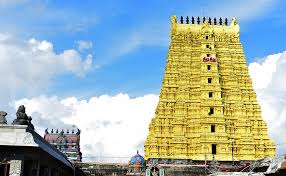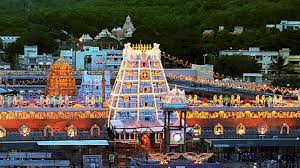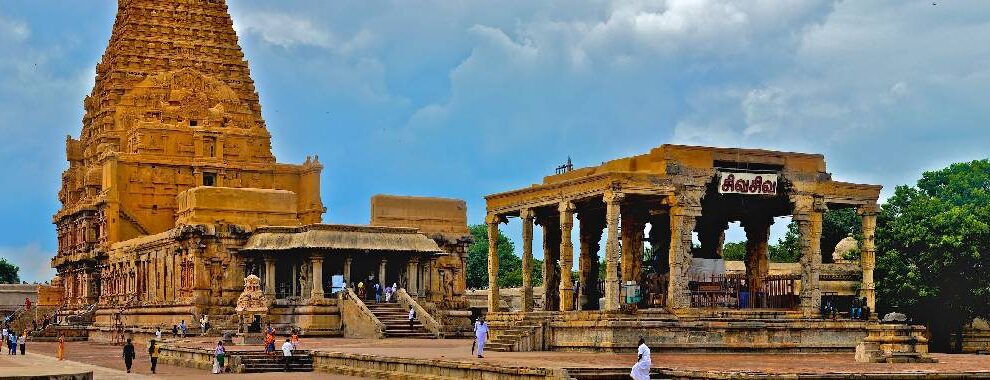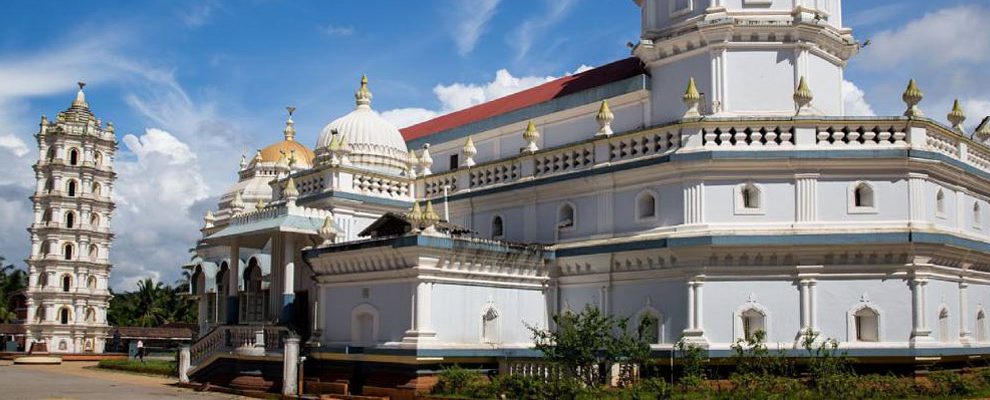History
The Ramanatha Swamy Temple in Rameshwaram, Tamil Nadu, is one of the most sacred Hindu temples dedicated to Lord Shiva and holds immense religious significance as a key pilgrimage site in the Char Dham and Jyotirlinga circuits. Situated on the serene island of Rameshwaram, the temple is associated with the epic Ramayana, where it is believed that Lord Rama worshipped Shiva here to absolve the sins of killing Ravana and sought blessings before crossing to Lanka.
The temple is renowned for its impressive Dravidian architecture, particularly its massive corridors—the longest among all Hindu temples in India—adorned with beautifully carved pillars and symmetrical design. The sanctum houses two Shiva Lingams: the main one installed by Lord Rama, and the other brought from Kashi by Hanuman. Pilgrims typically begin their visit with a ritual bath in the 22 tirtha wells located within the temple premises, each believed to have unique healing properties.
Blending deep spiritual tradition with architectural grandeur, the Ramanatha Swamy Temple is not only a cornerstone of South Indian devotion but also a symbol of the deep connection between mythology, faith, and heritage in India.
Greatness:
The Ramanatha Swamy Temple in Rameshwaram, Tamil Nadu, is one of the holiest and most architecturally magnificent temples in India, dedicated to Lord Shiva. It holds immense religious significance as one of the twelve Jyotirlingas and is also a key pilgrimage site in the Char Dham circuit. Steeped in legend, the temple is believed to have been consecrated by Lord Rama, who worshipped Shiva here to absolve the sin of killing Ravana. Renowned for its awe-inspiring corridors—the longest among all Hindu temples—adorned with intricately carved pillars, the temple radiates spiritual grandeur. Pilgrims begin their rituals with a dip in the 22 sacred wells inside the complex, each believed to possess unique healing properties. Situated near the sea, the temple offers not only divine blessings but also a profound sense of peace and history, making it a cornerstone of Hindu devotion and South Indian heritage.

Specialities:
The Ramanatha Swamy Temple in Rameshwaram, Tamil Nadu, is one of the most sacred Hindu pilgrimage sites and holds immense spiritual significance as one of the Char Dham (four holy abodes) and twelve Jyotirlinga shrines dedicated to Lord Shiva
It is believed that Lord Rama, after defeating Ravana, worshipped Shiva here to absolve his sins, and installed the lingam now enshrined in the temple. This mythological connection to the Ramayana makes the temple a powerful symbol of devotion and redemption.Architecturally, the temple is renowned for its vast corridors—the longest in any Hindu temple—adorned with intricately carved stone pillars, creating a visually stunning and meditative atmosphere. It also houses 22 sacred tirtha kunds (holy water tanks) where devotees perform ritual baths before worship. The main deity, Lord Ramanathaswamy, is worshipped in the form of a Shiva Lingam said to have been made of sand by Sita. With its deep religious roots, exquisite Dravidian architecture, and status as a convergence point of Shaivism and Vaishnavism, the Ramanatha Swamy Temple stands as a timeless beacon of faith, pilgrimage, and divine legacy.
Festivals:
- Maha Shivaratri
- Thai Amavasya
- Adi Amavasya
- Navaratri & Dussehra
- Vasanthotsavam (Spring Festival)
Timings:
- Morning: 5:00 AM – 1:00 PM
- Evening: 3:00 PM – 9:00 PM
FAQs
The temple is situated in Rameswaram, on Pamban Island in the Ramanathapuram district of Tamil Nadu. It lies in the Gulf of Mannar, very close to Sri Lanka.
The temple is dedicated to Lord Shiva, worshipped here as Ramanathaswamy, meaning “Lord of Rama.” The temple also honors Goddess Parvati.
Devotees take a ritual bath in 22 sacred wells (theerthams) inside the temple before darshan. Each well is believed to have medicinal or spiritual significance. A helper (paid service) assists devotees in the process.
The temple features the longest corridor in Asia, stretching over 1,200 meters, supported by over 1,200 intricately carved pillars.Built in Dravidian architectural style, it’s known for its symmetry, size, and spiritual grandeur.





